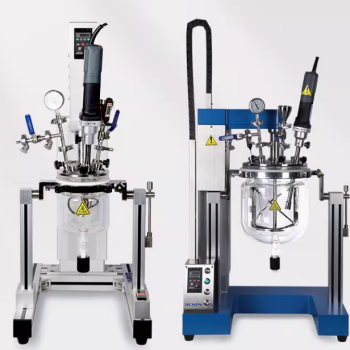Our range of homogenizers is designed to meet the diverse needs of laboratories, from small-scale sample preparation to high-throughput applications. Whether you need a compact 4-inch PP chamber fully automatic laboratory homogenizer or a versatile 8-inch PP chamber laboratory homogenizer, our products ensure precise and efficient homogenization. Explore our selection to find the perfect tool for your laboratory needs.
Toggle Categories
Get Instant Support
Choose your preferred way to connect with our team
-
Get Free Quote Fill out form for detailed pricing
-
Send Email Detailed inquiry support
-
WhatsApp Quick mobile chat
Response Time
Within 8 hours on working days, 24 hours on holidays
homogenizer

High Shear Homogenizer for Pharmaceutical and Cosmetic Applications
Item Number : COA-7

High Performance Lab Homogenizer for Pharma Cosmetics and Food R&D
Item Number : KT-VHE
Explore the Advanced Features and Benefits of Our Homogenizers
Our homogenizers are engineered to deliver superior performance in various laboratory settings, from microbiology to pharmaceuticals. Here’s a deep dive into the features, principles, and advantages that set our products apart:
Precision and Efficiency
Each homogenizer in our lineup is designed with precision in mind, ensuring that every sample is processed with the utmost accuracy. The 4-inch PP chamber fully automatic laboratory homogenizer, for instance, offers a compact yet powerful solution for laboratories requiring efficient sample preparation. Its corrosion-resistant design and customizable speed settings make it an ideal choice for a wide range of applications.
Versatility and Durability
The 8-inch PP chamber laboratory homogenizer exemplifies our commitment to versatility and durability. Constructed from high-quality materials, this homogenizer features a spacious chamber that can handle large volumes of samples. Its advanced homogenization mechanism ensures thorough and consistent mixing, making it indispensable for applications in biology, chemistry, and pharmaceuticals.
Advanced Homogenization Techniques
Our homogenizers leverage cutting-edge techniques such as shearing, cavitation, and turbulence to achieve optimal homogenization results. These physical principles work in harmony to break down particles and droplets, ensuring that your samples are uniformly processed. Whether you’re dealing with microbial inactivation, cell fractionation, or emulsification, our homogenizers provide the tools you need to succeed.
Customizable Solutions
We understand that every laboratory has unique needs. That’s why our homogenizers are designed with customization in mind. From adjustable speed settings to modular components, our products can be tailored to fit your specific requirements. Our team of experts is also available to provide personalized recommendations and support, ensuring that you get the most out of your investment.
Professionalism and Expertise
At Kintek Solution, we pride ourselves on our professionalism and expertise in the field of laboratory equipment. Our homogenizers are backed by years of research and development, ensuring that they meet the highest standards of quality and performance. We also offer customizable services to meet the specific needs of your laboratory, ensuring that you have the right tools for the job.
Ready to take your laboratory to the next level? Explore our full range of homogenizers and discover how our products can enhance your sample preparation and mixing processes. For more information or to discuss your specific needs, please contact us today. We look forward to helping you achieve your laboratory goals with our advanced homogenization solutions.
FAQ
What Is A Homogenizer And What Are Its Main Applications?
What Are The Different Types Of Homogenizers Available?
How Does A Homogenizer Work?
What Are The Advantages Of Using A Homogenizer In Laboratory Settings?
Can You Explain The Application Of Homogenizers In Microbial Inactivation?
How Does Homogenization Affect The Quality Of Milk?
REQUEST A QUOTE
Our professional team will reply to you within one business day. Please feel free to contact us!
Related Articles

Advanced Technologies for Precision Ceramics
Explores key technologies and preparation methods for precision ceramic components, highlighting their applications and challenges.

In-depth analysis of the key characteristics and advantages of polytetrafluoroethylene
This paper will take an in-depth look at the key properties of polytetrafluoroethylene (PTFE), such as high-temperature resistance, corrosion resistance and low friction, as well as the wide range of applications and advantages in industry and everyday life.
